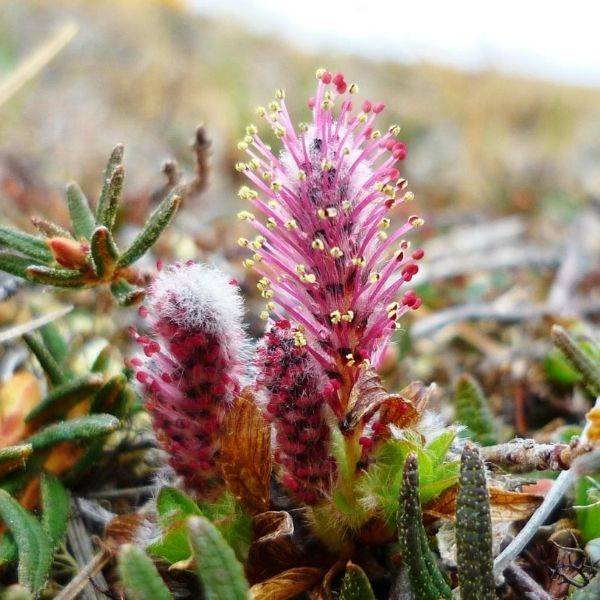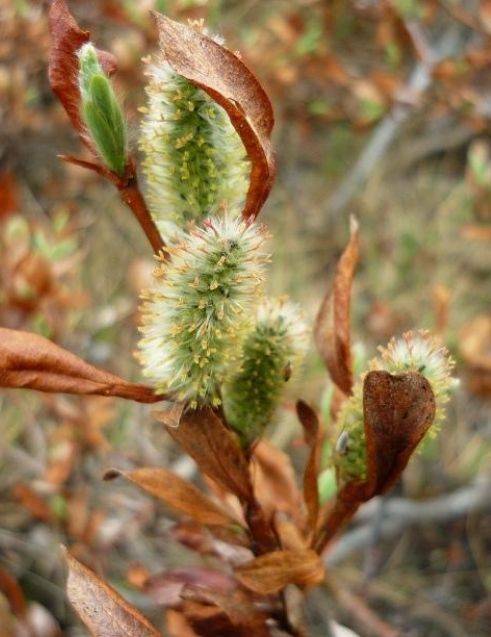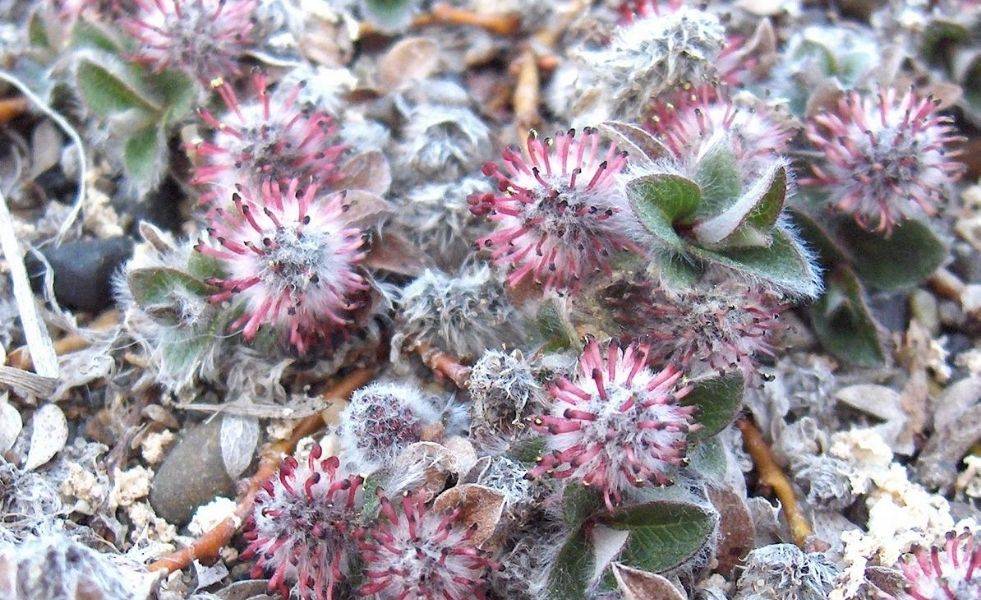Willow
- Iñupiaq name: Uqpik or Uqpiich
- Family: Salicaceae
- Scientific name: Salix spp. (edible species on the North Slope include: S. alaxensis, S. arbusculoides, S. arctica, S. glauca, S. lanata, S. pulchra, S. reticulata, and S. rotundifolia)
- Distinguishing characteristics: Leaves on willows vary widely from small and rounded to oblong or lance shaped. Willow flowers grow in catkins, which are long, cylindrical clusters of flowers with either no petals or no apparent petals. Flowers bear seeds with long hairs which are dispersed by the wind.
- Similar species: With its distinct flowers, willow does not have any lookalikes on the North Slope.
- Habitat: Wet to dry tundra.
- Best time to harvest: Can be harvested throughout entire growing season.
- Uses: Willow bark contains salicylic acid, the active ingredient in aspirin, so it has been historically used to treat mild aches and pains, like headaches and bee stings. Young willow leaves and shoots are very high in vitamin C, and have traditionally been preserved in seal oil and eaten with meat.



Photos courtesy of the Grand Valley State University Arctic Ecology Program
